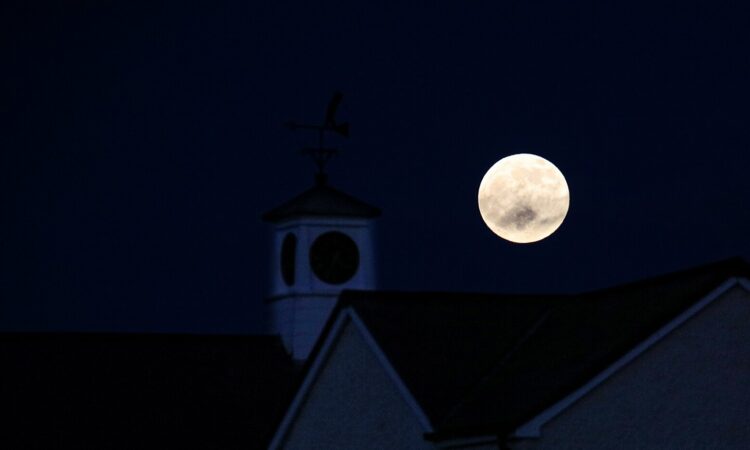As new challenges come our way in 2021, there's only one thing for sure: The sun will still shine, and so will the moon. This year's first full moon, also known as the Wolf Moon, will occur on Jan. 28 at 7:16 p.m. UTC, or 2:16 p.m. EST. Of course, that's still during daylight for many places. But don't worry — even though the moon is technically only full at the precise moment it's 180 degrees opposite the sun, it'll still seem full to the casual observer for at least a day or two preceding and following the full moon. On Jan. 28 in the U.S., the moon won't actually appear over the horizon until sundown, so grab your binoculars or telescope at dusk to start your observations.
Why is it called the Wolf Moon?
The Old Farmer's Almanac assigns nicknames to the full moons based on their Native American and colonial names. January's full moon is called the Wolf Moon because people frequently hear wolves howling at night in the winter. (That said, wolves don't actually howl at the moon — howling is a form of communication, whether that's for marking territory or calling the pack together.)
Different cultures have other names for the moon, however, so the Wolf Moon is also known as the Center Moon (since January is the middle of the winter season), as well as the Cold Moon, Frost Exploding Moon, Freeze Up Moon, or Severe Moon (all names derived from the chilly winter weather).
When is the next full moon?
A full moon occurs every 29.5 days, so the next one — the Snow Moon — will take place on Feb. 27. While the 29.5-day cycle means that there's typically one full moon per calendar month, occasionally, a single month will have two full moons, the second of which is known as a Blue Moon. And with just 28 or 29 days in the month, February sometimes misses out on a full moon entirely.
Source: Read Full Article

